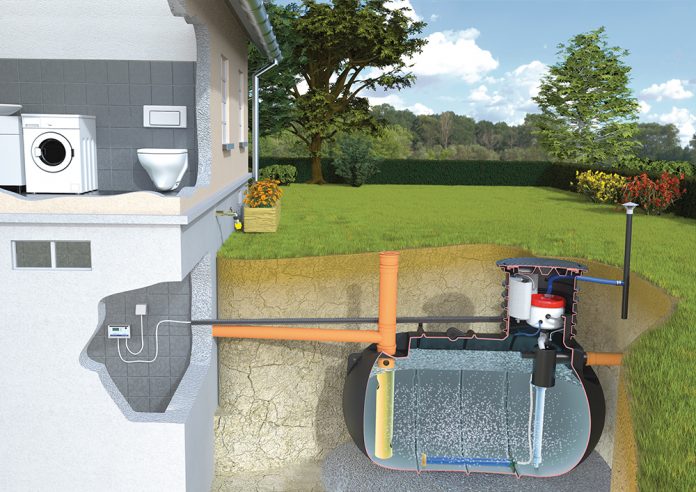By Dr Evangelos Petropoulos, Technical Manager, Premier Tech Water and Environment
Humans, as all living creatures, require nutrients (i.e. nitrogen and phosphorus) to maintain vital functions. When the appropriate facilities are not present and/or are inadequate to treat our metabolic nutrient-based by-products, in the form of sewage, environmental problems such as deterioration of aquatic systems and poor quality of water occurs (i.e. Eutrophication). Premier Tech Water and Environment has a moral obligation to improve the state of the heavily eutrophicated waters of Great Britain.
Today, there is no exact regulation that defines the level of nutrients from wastewater effluents to characterise them contaminated. Thus, contamination becomes a qualitative parameter that varies as per the state of the discharge water body.
Wastewater is rich in nutrients, mainly in the form of ammonia-N and phosphorus. Currently, Environmental Agencies in Great Britain regulate mainly against the former (typically <20mgNH3/4-N/L) but rarely for the latter. These treatment levels, especially for small installations (<50 People Equivalent (PE)), are not adequate to nullify the probability of environmental deterioration.
This leads to Eutrophication, a result from the excess phosphorus (TP) by-products in the water that occurs when these nutrients reach to a level where the aqueous ecosystem cannot ‘purify’ itself. As per the OECD, “Eutrophication is the nutrients’ enrichment of water causing structural changes to the ecosystem such as increased algae production and aquatic flora, depletion of fish species (due to hypoxia), deterioration of water quality and other effects that render water impossible to use”.
Only minor phosphorus concentration is required in the presence of light and oxygen to lead to eutrophication (<0.1mgTP/L after dilution with the water body). Hence, to deplete such likelihood, effluents with concentrations of less than 1.0mgTP/L need to be considered.
Typically, phosphorus from wastewater is removed biologically, or via chemical precipitation.
In large installations, such removal takes place using SBR (Sequencing Batch Reactor) technology. Biological phosphorus removal in SBR-based systems is dictated by the uptake of phosphorus by bacteria known as polyphosphate accumulating organisms (PAO). This is typically achieved by alternating anaerobic, anoxic and aerobic conditions (switching electron acceptors) in the presence of easily-degradable organic carbon (usually in the form of volatile fatty acids for wastewater). The carbon is stored in the PAO cells as intracellular polymer (polyhydroxyalkanoates (PHA)) to be later processed under anoxic and/or aerobic conditions. In the subsequent stage, PAO oxidize the stored PHA to gain energy, glycogen replenishment, and phosphorus uptake.
Apart from bioaccumulation, chemical precipitation of poorly soluble compounds is required for better phosphorus-removal efficiency. Typically, Alum and/or Iron salts are introduced for the precipitation of phosphorus.
At Premier Tech Water and Environment, we scaled down conventional SBR technologies and optimized the timed phases to achieve biological removal of phosphorus. Specifically, after trialing we found that total phosphorus can drop from 9mg/L to 2.3mg/L as an average from a test that lasted for a year. Although this efficiency is quite good, reaching approximately 75%, is still not ideal considering that lower concentrations are essential to prevent from Eutrophication.
To improve efficiency, we introduced dosing of a polyelectrolyte (PAC). Co-precipitation not only improves effluent phosphate levels, but also removes biological oxygen demand, heavy metals, organic micropollutants and viruses. The minimised dose, due to the major biological phosphorus removal, reduces the likelihood for environmental pollution from the polyelectrolyte itself and nullifies the likelihood for bacterial inhibition. This method resulted to an effluent that could consistently deliver an effluent with less than 0.7mgTP/L.
The findings demonstrate that co-precipitation could enhance phosphorus removal, which is especially efficient for influents with a low C:P ratio (i.e. domestic wastewater).
This is a revolutionary approach for the decentralized off-mains wastewater treatment. Today, we estimate more than 800,000 properties in the UK are off-mains. With an average of 3 PE per property and an average phosphorus production per PE at 1.5gTP per PE per day, we estimate that the British waters (surface and underground) receive an average of 3,600 kgTP per day! Using combined biological/chemical systems we can reduce this load by ≈90% making a significant difference in the water quality of our country.




